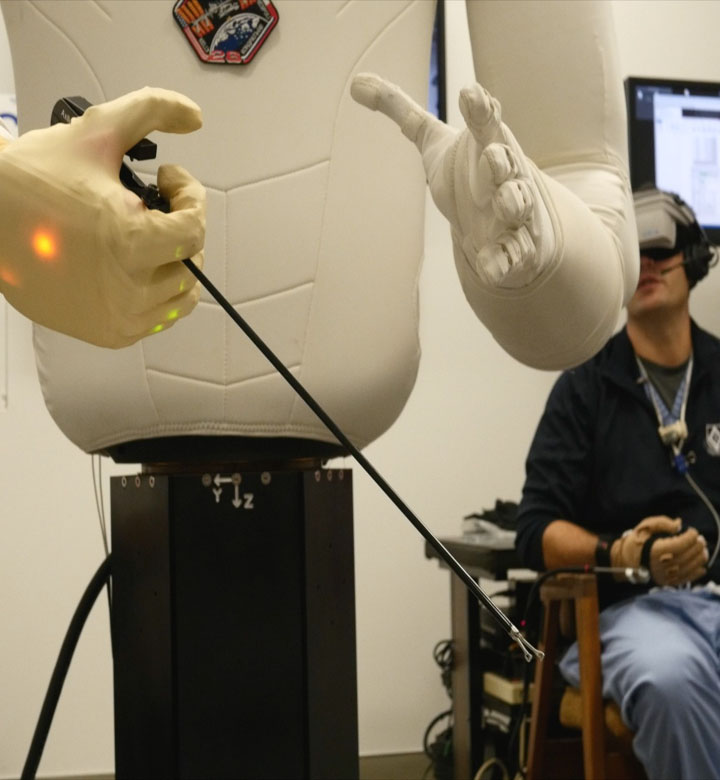Robonaut 2: Medical Opportunities
The future of robotics and medical care
Researchers at the NASA Johnson Space Center (JSC), in collaboration with General Motors and Oceaneering, have designed a state-of-the-art, highly dexterous, humanoid robot: Robonaut 2 (R2). R2 is made up of multiple component technologies and systems making up nearly 50 patented and patent pending technologies with the potential to be game-changers in multiple industries including the medical industry. R2 technologies can aid in a variety of medical applications, ranging from telemedicine to handling the logistics of medical procedures. These activities can be done in autonomous mode or in teleoperation mode, where the robot is controlled by a technician or physician. This type of operation would be advantageous during situations where a biomedical hazard poses risks to humans, such as a contagious outbreak or a combat situation. For more routine daily use, R2 could function as an assistant to the hospital staff.
Benefits
- Teleoperations: R2 can be controlled by direct teleoperations
- Safe: Able to work side-by-side with humans
- Visual system: Multiple cameras provide stereo vision and depth perception
- Dexterous Hands: Capable of using many of the same tools created for human use
- Sensing: Uses its vision, force and tactile sensing to carry out tasks in real time
Applications
- Telemedicine
- Surgical Robotics
- Home Medical Service Robotics
- Medical Rehabilitation
- Hospital Service Robotics
The Technology
 |
| R2 holding a surgical tool during a teleoperated medical procedure test session with the Methodist Hospital surgeons and NASA engineers. |
The R2 technology capabilities in telemedicine are being explored through partnerships with medical institutions. After a quick medical procedure training, a R2 teleoperator was able to guide the robot and perform an ultrasound scan on a medical mannequin. Humans at the controls were able to guide the robot to perform the task correctly and efficiently by using R2's dexterity to apply the appropriate level of force and were able to track their progress using the robot's vision system. The technology was also used to experiment using a syringe and an intubation procedure with a mannequin to demonstrate R2's telemedicine capabilities. R2 is well suited to be used by physicians to conduct medical procedures on humans in remote locations.


No comments:
Post a Comment